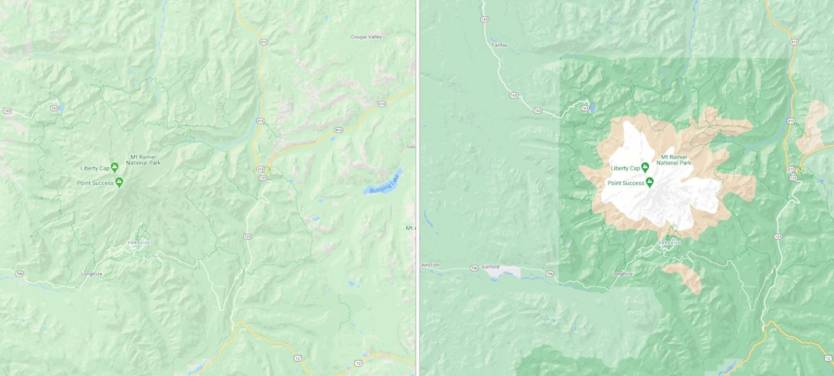- Google Maps has another set of new features for users, and this time we’re looking at a massive redesign of the actual maps.
- Google is adding more detail to its maps with a new color-mapping algorithm that uses information from satellite imagery to improve the rendering of natural features.
- Google isn’t just enhancing the natural landforms that are displayed on Maps, it’s also working on an even more useful design change that concerns street information.
- Streets in Google Maps will look precisely like they do in real-life, complete with additional information, including the presence of sidewalks, crosswalks, and accessibility features.
It was only a few months ago that Google rolled out a massive Google Maps update to celebrate its 15 years of mapping experience. But it turns out that Google had more tricks up its sleeve for improving the overall Maps experience. On Tuesday, Google quietly announced another big change coming to Maps.
This time around, Google isn’t touching the user experience of getting from Point A to Point B or adding extra features. Instead, Google is going for a massive makeover of the actual maps that you see inside the application. Google is bringing “even more detail and granularity to the map,” so that you can understand what an area looks like when planning a visit.
Google is applying a “color-mapping algorithmic technique” to its satellite imagery that covers 98% percent of the world’s population to deliver “an even more comprehensive, vibrant map of an area at global scale.” The new Google Maps will make it easier to distinguish between the particularities of certain areas, including arid areas like beaches and deserts, lakes and rivers, and the amount of vegetation.

Google is using computer vision to identify natural features from satellite imagery, with a focus on arid, icy, forested, and mountainous regions. It then assigns these regions a range of colors to highlight a region’s particularities better. Google says that a dense forest could be painted in dark green, while an area of “patch shrubs” would show up in a lighter shade.

The examples above and below show the differences between the current version of Maps and the redesign that’s coming. The new color layers make it even easier for the viewers to spot local attractions and get a general idea of what landforms to expect in a specific region.

But what’s even better than this overall visual enhancement of natural features, is an actual update to the way streets are displayed. Google explains that street information will soon replicate the exact shape and width of real-life roads, as seen in the following example.

Details, including sidewalks, crosswalks, and pedestrian islands, will be clearly visible on the map, as well as crucial information covering accessibility needs, like wheelchair and stroller access. That’s actually an even better visual makeover than the color algorithm for landforms. Initially, only London, New York, and San Francisco will get the more detailed street maps, but Google says that more cities will be covered in the future.








